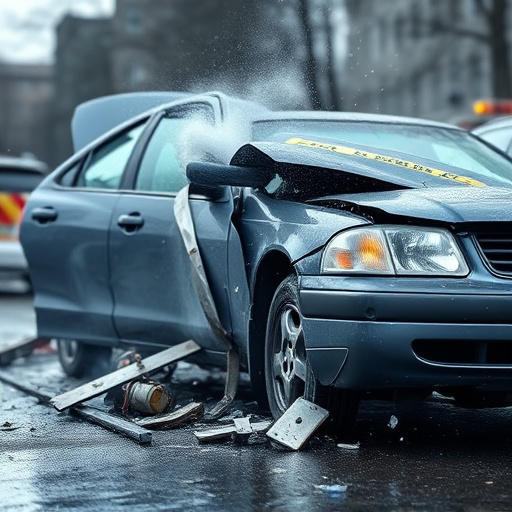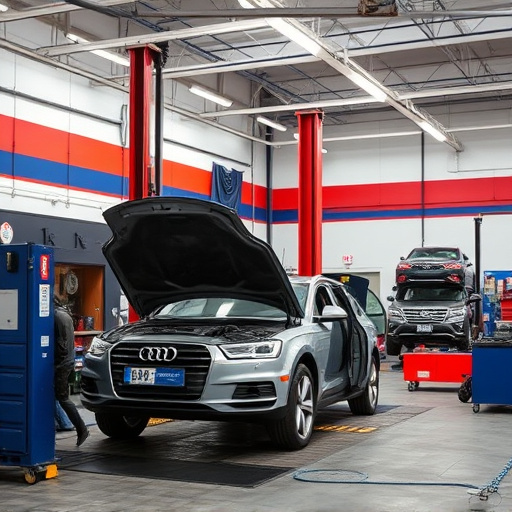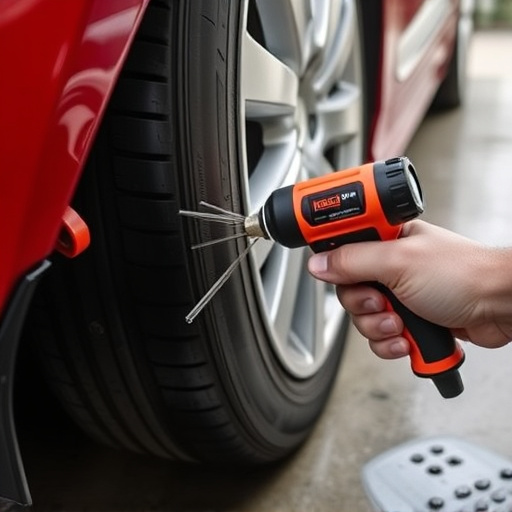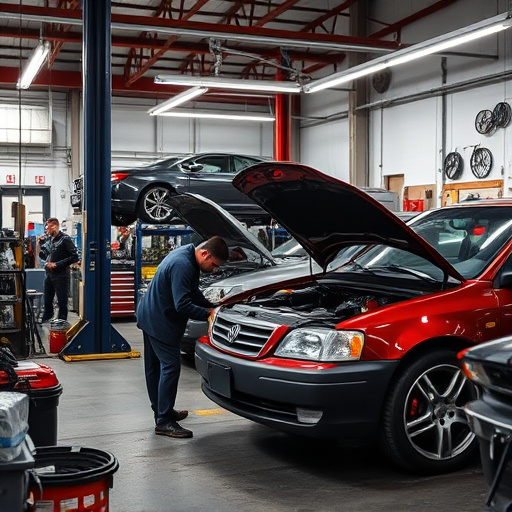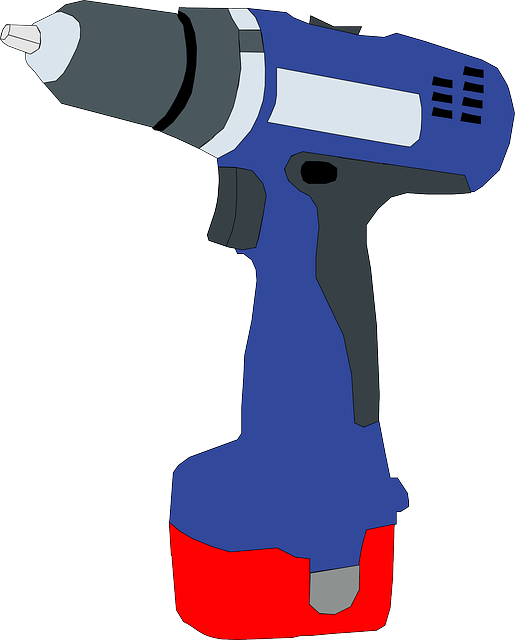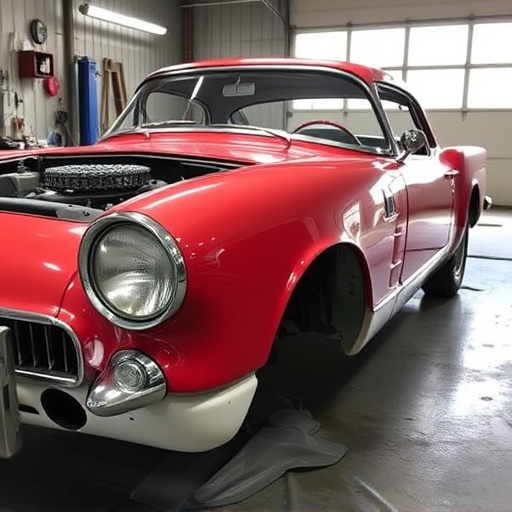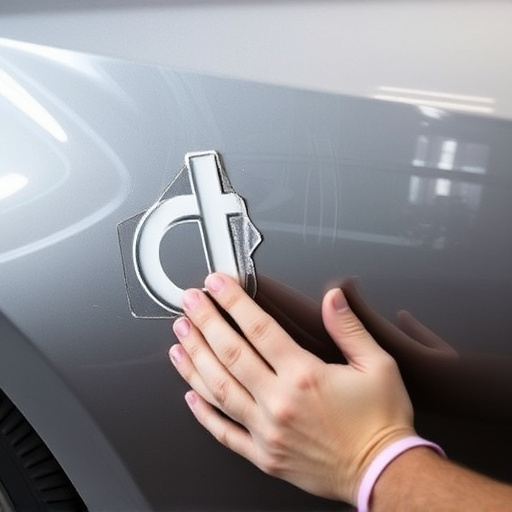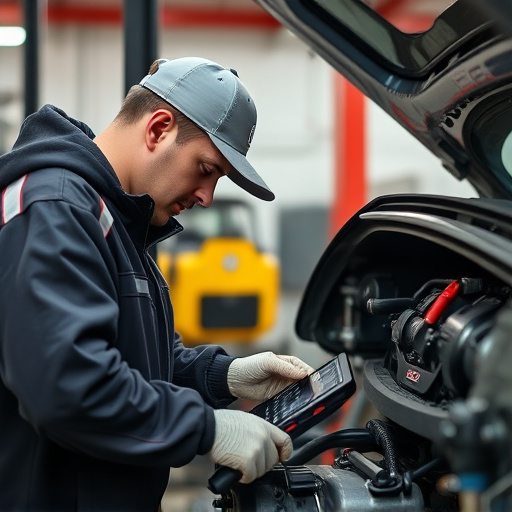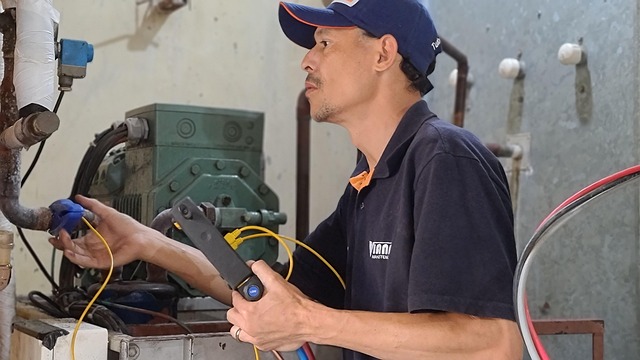A repair quality inspection is a thorough evaluation ensuring auto body repairs meet top standards across all aspects—from paint jobs and welds to panel alignment and part fitment. The duration varies based on vehicle repair complexity, shop size, weather conditions, and tool/part availability. Efficiency can be optimized through checklists, digital imaging, and advanced sensors, balancing speed and precision while maintaining thoroughness for informed decisions during restoration.
A well-conducted repair quality inspection is vital for ensuring the longevity and safety of repairs. This comprehensive guide delves into the optimal duration and scope of such inspections, highlighting key factors influencing time requirements. From understanding the purpose and assessing various aspects to optimizing efficiency without compromising thoroughness, we explore best practices for effective repair quality inspections. Learn how to ensure every step meets the highest standards.
- Understanding the Purpose and Scope of a Repair Quality Inspection
- Factors Influencing the Time Required for a Comprehensive Assessment
- Optimizing Efficiency While Maintaining Thoroughness during Inspections
Understanding the Purpose and Scope of a Repair Quality Inspection

A repair quality inspection is a meticulous process designed to ensure that repairs on vehicles, especially in an auto body shop, meet the highest standards. It involves a thorough evaluation of every aspect of the work performed, from the materials used to the techniques employed. The primary goal is to verify that the vehicle’s structural integrity and aesthetic appeal are restored seamlessly. This inspection isn’t just about identifying visible flaws; it delves into the minutiae, examining paint jobs, welds, panel alignment, and the overall fit of replacement parts.
Understanding the scope includes assessing the quality of the car dent repair or auto bodywork. For instance, in an auto body shop handling car dent repair, the inspector will check for straight lines, even spacing between repairs, and whether the finish matches the rest of the vehicle’s paneling. This process is crucial not just to guarantee customer satisfaction but also to maintain the safety and resale value of the vehicle.
Factors Influencing the Time Required for a Comprehensive Assessment

The duration of a comprehensive repair quality inspection varies based on several factors. One key factor is the extent and complexity of the damage to the vehicle body repair. A simple dent removal might take a skilled technician only a few minutes, while intricate structural repairs can easily stretch the process to an hour or more.
Another influencer is the size of the car body shop and its organizational efficiency. Larger facilities with specialized teams for different aspects of the inspection—like assessing paint work, bodywork, and mechanical components—can complete assessments faster due to streamlined workflows. Conversely, smaller shops might need more time to account for handling each task themselves. Additionally, factors like weather conditions (which can impact drying times for paints) and availability of necessary tools or parts can also subtly influence the timeline.
Optimizing Efficiency While Maintaining Thoroughness during Inspections

Optimizing efficiency during a repair quality inspection is crucial while ensuring thoroughness. It’s about finding that sweet spot where speed meets precision. Inspectors can employ strategic techniques to streamline the process without sacrificing detail. For instance, creating standardized checklists for common issues in vehicle dent repair or collision damage assessment helps in quickly identifying and prioritizing repairs. This structured approach allows technicians to focus on areas requiring the most attention, making the inspection more efficient.
Moreover, integrating technology like digital imaging and specialized tools can significantly enhance accuracy and speed. High-resolution cameras capture detailed images, enabling inspectors to spot subtle imperfections that might be missed with the naked eye. Additionally, advanced sensors can quickly gauge the extent of damage in a vehicle collision repair, providing real-time data for more informed decisions during the restoration process.
A typical repair quality inspection should efficiently assess the scope of work required, ensuring both thoroughness and timeliness. By understanding the purpose, considering influencing factors, and optimizing inspection processes, professionals can deliver high-quality repairs in a reasonable timeframe. This balanced approach ensures client satisfaction and cost-effectiveness, making repair quality inspections a vital component in any successful renovation or maintenance project.
